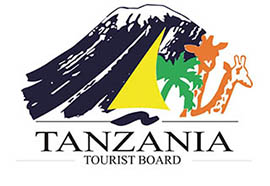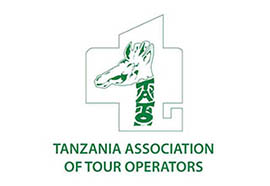MAASAI MARA
Masai Mara National Reserve is one of the most popular tourism destinations in Kenya- Africa. The reserve is located in the Great Rift Valley in primarily open grassland.
Wildlife tends to be most concentrated on the reserve’s western escarpment.
The Masai Mara is regarded as the jewel of Kenya’s wildlife viewing areas. The annual wildebeest’s migration alone involves over 1.5 million animals arriving in July and departing in November.
There have been some 95 species of mammals, amphibians and reptiles and over 400 birds species recorded on the reserve.
Mara Triangle
Wildlife – Nowhere in Africa is more wildlife abundant. The Mara is known as one of the finest wildlife destinations in the world, with an excellent chance of seeing the big five, cheetah, serval, hyena, bat-eared foxes, black-backed and side-striped jackals, hippo, crocodile, baboons, warthog, topi, eland, Thompson’s gazelle, Grant’s gazelle, impala, waterbuck, oribi, reed-buck and zebra.
Climatic conditions – Altitude 5,300 feet (1,600 metres). Rainy season from November through May, with peak rainfall in December-January and April-May. Dry season from June-November. Often sunny mornings with cloud build-up in the afternoons – during the rains this develops into thunderstorms in the afternoon and evening. Max temperatures up to 30°C and min temperatures around 20°C.
Access – The Mara Triangle is serviced by two all-weather airstrips– Mara Serena and Kichwa Tembo. The main road access into the Triangle is through Narok and Sekenani Gate.
Accommodation – Mara Serena (150 beds that have luxury bedding and cozy pillows) and Little Governors’ Camp (36 beds luxury bedding and cozy pillows) are the only two lodges situated in the Triangle. Kichwa Tembo, Mpata Club, Olonana, Mara Siria and Kilima Camp are situated on the periphery but use the Triangle.
Best time to visit – Peak season is between July and October, during the migration. Early November and February can also offer excellent game viewing.
Activities – Game viewing, camping, night game drives, visits to Masai cultural villages, ballooning, bush dinner, lunch and breakfast. Masai Mara makes for a spot for a destination wedding photographer to engage different scenes with clients.
The Great Wildebeest Migration in the plains of East Africa is one of the world’s most thrilling, intriguing and spectacular displays of wildlife behavior. As such, our travelers place great timing importance on having the best front row seats to see the event. By sharing our personal knowledge, local experience and expertise of the Great Migration in Masai Mara National Reserve. Masai Mara is the most noted location of the wildebeest migration due to its famed Mara River crossings, and this has led to some misunderstandings about the migration itself. The migration is an ongoing movement of animals that takes place throughout the year. The migration occurs within an area that is known as the “Serengeti ecosystem.” The 40,000-square mile area is defined by Masai Mara National Reserve in the north and, in the south, Ndutu, Ngorongoro Conservation Area and Maswa Game Reserve in Tanzania. The central, eastern and western areas include Grumeti Reserve, Loliondo, the official Serengeti National Park including part of southern expanse of Kusini and other protected areas. The migration is not a singular, isolated event. Instead, the phrase describes the constant movement of over 1.5 million wildebeests and hundreds of thousands of zebras, as well as elands and gazelles. As with other wildlife, the purpose of the movement is the search for pasture and water. When supplies of these vital resources are depleted in one area, the animals move to another area where water, grasses and other food sources are plentiful.
Owing to the massive size of the herds, the Great Wildebeest Migration arriving from the Serengeti stands out from other migratory movements. How the animals know where to find food and water remains a mystery largely, but researchers have developed some hypotheses about the behavior. Most evidence indicates that weather patterns and the cycle of the rainy and dry seasons have the greatest influence on the wildlife movement. Because rainfall and weather are somewhat unpredictable, there is no way to calculate concretely where the animals will be at any point in the year, nor how long they will remain in one area. A reliable appraisal of their movement is only possible by studying historical data of previous migrations years.
One of the most requested events in the migration is the arrival crossing of the Mara River that occurs around late July to August with parts of September and again on their return south, around the last two weeks of October through early November. These are the best times to track and see the annual wildebeest migration in Masai Mara. While the sight of masses of animals thundering across the open plains is spectacular, the Mara River crossing will take you through a range of emotions – awe, anticipation, heartache, inspiration, excitement and much more. The crossing is the subject of many documentary films from the BBC to the National Geographic, but even superb filmmaking cannot give you the experience of being on-site. Throngs of wildebeests gather on ledges above the river, and you can sense their urgency and hesitation. The energy in the air is palpable. As you watch in silence, the wildebeests seem to be gathering their courage, and on some days, they leave the river’s edge and disperse across the savannah to graze.
But then the day arrives. The wildebeests once again stand above the river, eyes wide, breath labored – each animal vying for a position that gives the safest and surest path to the water and the opposite bank. Hours can pass while conversing with your guide as the wildebeests nervously watch the water for crocodiles. Finally, with no apparent trigger, a few animals rush toward the water, with thousands following close behind along with zebras, elands and gazelles. Your excitement quickly turns to fear. You know that time is of the essence – crocodiles are moving toward the slower and smaller wildebeests. Snapping jaws are not the only threat, though, as the current of the Mara River acts with greater unrelenting ferocity, often ending more life than the predators. Your heart breaks for the younger calves that are simply too tired and inexperienced to survive the gantlet. In the chaos, nonetheless, you watch as one-by-one, the strongest and most determined reach the other side, and you feel a great sense of relief and joy. Few are stopped short by prowling and stalking predators like lions, leopards, cheetahs, hyenas waiting around the upper banks of the Mara River for an easy catch on arrival. For those animals that reach the greater plains of Masai Mara, life is easier but only for a relatively short time.Due to its size (almost 1/15th of the Serengeti National Park in Tanzania), pasture and water supply slowly fade, and the wildebeests and its herbivore partners must continue their ongoing return journey with the crossing of the Mara River again. The rains return to other areas of the ecosystem, and the gnus, zebras, gazelles and elands continue their transitory journey to the prime grazing grounds in the northern and eastern Serengeti around the middle of October through early November.










 WhatsApp us
WhatsApp us